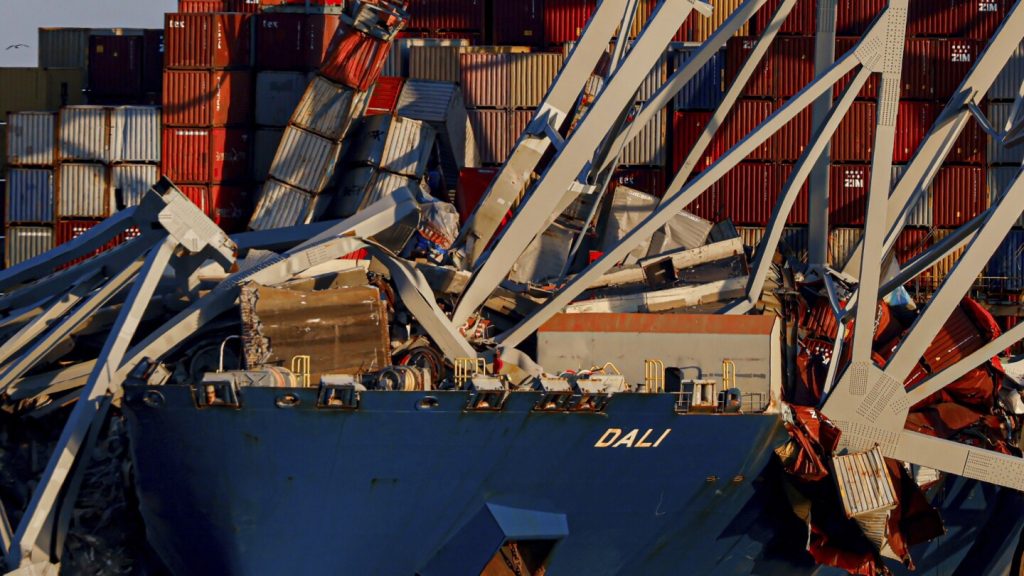Teams of engineers are working on the intricate process of cutting and lifting the first section of twisted steel from the collapsed Francis Scott Key Bridge in Maryland. The bridge crumpled into the Patapsco River on Tuesday after a massive cargo ship crashed into one of its main supports. Sparks could be seen flying from a section of bent and crumpled steel, and the U.S. Coast Guard confirmed that work has started to remove a section of the toppled structure. Crews are carefully measuring and cutting the steel from the broken bridge before attaching straps to lift it onto a barge and float it away. Seven floating cranes, 10 tugboats, nine barges, eight salvage vessels, and five Coast Guard boats are on site in the water southeast of Baltimore.
Maryland Governor Wes Moore emphasized the importance of the ongoing work to remove debris and reopen the ship channel and Port of Baltimore. He highlighted the complexity of the process and the significance of the first movement of the wreckage. Residents, like Randy Lichtenberg, who visited the site expressed awe and sadness at the sight of the broken pieces of the bridge. Lichtenberg spoke of the tough job faced by the crews working in the cold water. The accident, which shocked the community, has left many feeling disbelief at the sudden and dramatic collapse of an iconic part of the Baltimore skyline.
One of the immediate goals for the crews is to open a smaller auxiliary ship channel to allow tugboats and small barges to move freely. The stabilization of the site is also crucial for divers to continue the search for the four missing workers. The workers, who are presumed dead, were from Mexico, Guatemala, Honduras, and El Salvador. The crew of the cargo ship involved in the collision remains onboard, safe, and are being interviewed. Federal and state investigators are still trying to determine why the accident occurred. There are no indications of active releases or hazardous materials in the water, assuring the public of minimal pollution concerns.
Officials are now focused on rebuilding the bridge and addressing the economic impact of the closed port and severed highway link. The bridge, completed in 1977, carried Interstate 695 around southeast Baltimore. Maryland transportation officials are planning to rebuild the bridge and considering innovative designs or building materials to expedite the project. President Joe Biden’s administration has approved $60 million in immediate aid and promised full federal funding for the rebuild. The closure of the port and the halt in ship traffic will have significant effects on dockworkers, commuters, and U.S. consumers, potentially leading to shipping delays. The Port of Baltimore handles a large volume of cars and farm equipment, making the impact far-reaching. Trucks are still being processed at marine terminals, despite the suspension of ship traffic.
The collapse of the Francis Scott Key Bridge has ignited a concerted effort to remove debris, search for missing workers, and address the economic impact on the region. As crews work diligently to cut and lift sections of the twisted steel, the community remains in a state of shock and sadness over the loss of an important infrastructure. The collaborative effort involving multiple agencies, including the U.S. Coast Guard and state officials, demonstrates the commitment to restoring normalcy and ensuring the safety of the waterways. The plans to rebuild the bridge with federal funding underscore the significance of this incident and the long-term implications for transportation and commerce in the region. The involvement of various stakeholders, including local residents, highlights the sense of community solidarity in the face of a challenging and unexpected event.


